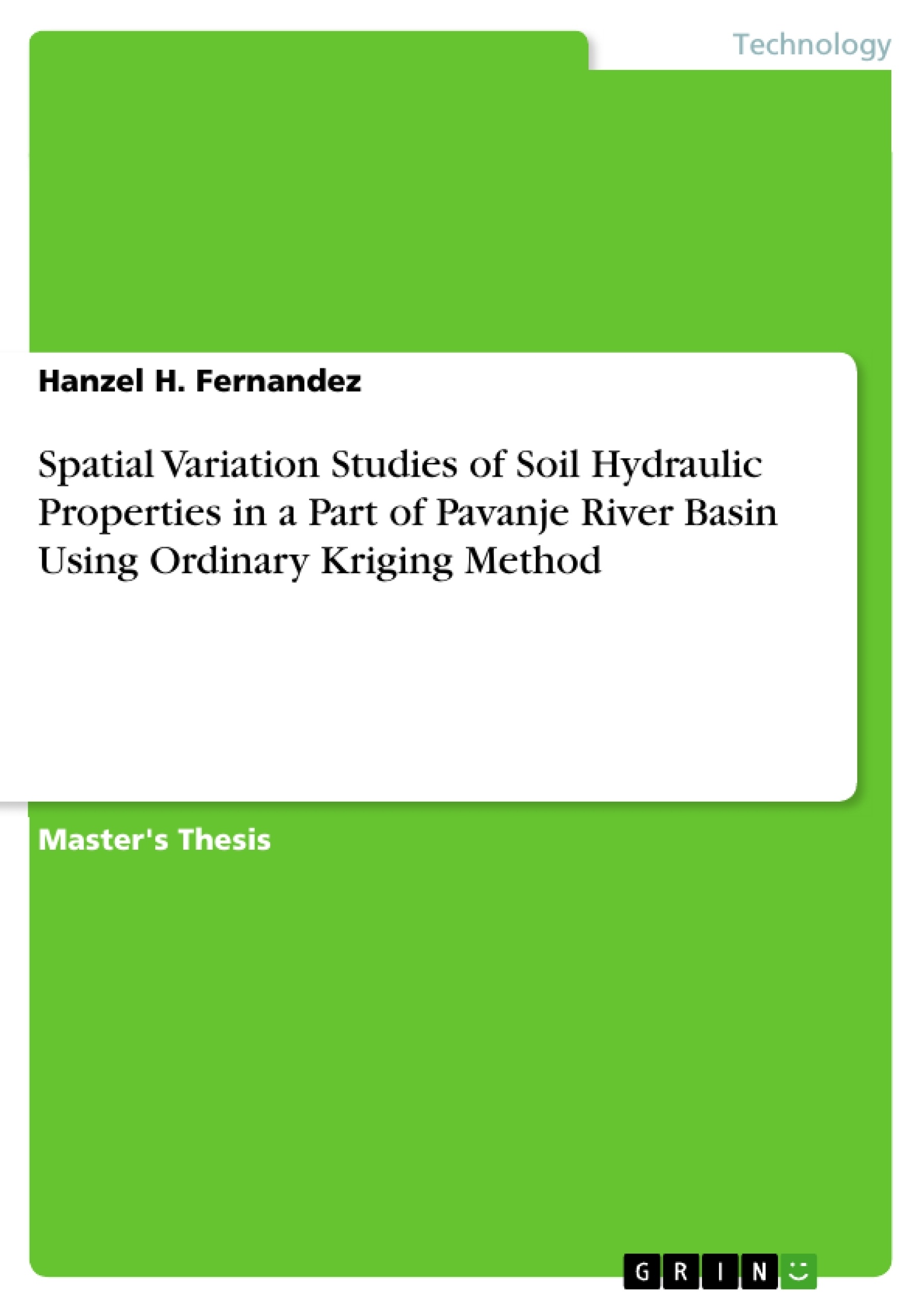Soil hydraulic properties estimation has always been a challenging task for
hydrologists and engineers as the methods to be implemented in the estimation are
laborious, time consuming and costly. The two major hydraulic properties of soil that
are required the most are soil water retention parameters and hydraulic conductivity.
The main objective of this study is to find out the spatial structure of both these
hydraulic properties and study their variation in a part of Pavanje river basin. This
study presents a methodology that can be adopted in estimation of soil hydraulic
properties over an entire region by using Geostatics particularly Kriging interpolation
method. Soil basic properties are estimated at 5 different depths at 20 sites. Soil
retention parameters are developed using a region specific pedotransfer function.
Saturated hydraulic conductivity is estimated using permeameter. Semivariograms are
developed to find out the dissimilarity between the pairs of soil hydraulic properties
values in a 2 dimensional surface. Surface maps of soil hydraulic properties are
developed using ArcGIS® software. The accuracy of prediction of Kriging
interpolation method is found out by comparing with two other interpolation methods.
The surface maps prepared can be used by hydrologists, engineers and agriculturists
to improve their irrigation systems design, land scape modelling and precision
farming etc.
Inhaltsverzeichnis (Table of Contents)
- INTRODUCTION
- GENERAL
- NEED FOR RESEARCH
- OBJECTIVES AND SCOPE OF STUDY
- ORGANIZATION OF THESIS
- LITERATURE REVIEW
- GENERAL
- DETERMINATION OF SOIL BASIC AND HYDRAULIC PROPERTIES
- PEDO-TRANSFER FUNCTIONS
- SPATIAL VARIATION OF SOIL PROPERTIES
- GEOSTATISTICS
- ORDINARY KRIGING
- INFERENCE
- EXPERIMENTAL SETUP AND METHODOLOGY
- GENERAL
- STUDY AREA
- SOIL SAMPLE COLLECTION
- SAMPLE PREPARATION
- EXPERIMENTAL ANALYSIS
- WATER CONTENT DETERMINATION
- BULK DENSITY
- GRAIN SIZE ANALYSIS (Dry Mechanical Sieve Analysis Only)
- SATURATED HYDRAULIC CONDUCTIVITY (Falling Head Method)
- ORGANIC MATTER CONTENT (Walkley and Black Method)
- ESTIMATION OF RETENTION PARAMETERS USING PEDO-TRANSFERFUNCTION
- PREDICTION OF SOIL HYDRAULIC PROPERTIES AT UNSAMPLED LOCATIONS
- Interpolating a Surface from Sampled Point Data
- Exploratory Analysis of Data
- Semivariogram
- Trend
- Modeling the Semivariogram
- SOFTWARE USED
- STEPS IN CREATION OF SURFACE MAPS OF SOIL PROPERTIES
- METHODOLOGY
Zielsetzung und Themenschwerpunkte (Objectives and Key Themes)
The primary objective of this study is to investigate the spatial structure of soil hydraulic properties, specifically soil water retention parameters and hydraulic conductivity, within a portion of the Pavanje river basin. The study aims to develop a methodology for estimating these properties across an entire region using geostatistical techniques, particularly Kriging interpolation. The study also seeks to assess the accuracy of Kriging interpolation by comparing it to other interpolation methods.
- Spatial variation of soil hydraulic properties
- Application of geostatistical methods (Kriging) for soil hydraulic property estimation
- Development of surface maps of soil hydraulic properties
- Comparison of Kriging interpolation with other interpolation methods
- Utilization of soil hydraulic property maps for applications in irrigation design, landscape modeling, and precision farming
Zusammenfassung der Kapitel (Chapter Summaries)
The introduction provides an overview of the study's context, including the significance of soil hydraulic properties in hydrological and engineering applications. It highlights the challenges associated with traditional estimation methods and outlines the study's objectives and scope.
The literature review chapter delves into existing research on soil hydraulic property determination, pedo-transfer functions, spatial variability of soil properties, geostatistical methods, and ordinary Kriging. It provides a theoretical foundation for the study's methodology.
The experimental setup and methodology chapter details the study area, soil sampling procedures, experimental analysis methods, and the use of geostatistical techniques for predicting soil hydraulic properties at unsampled locations. It describes the specific steps involved in creating surface maps of soil properties.
Schlüsselwörter (Keywords)
The main keywords and focus topics of this study include soil hydraulic properties, geostatistics, Kriging, semivariogram, surface maps, pedotransfer functions, spatial variation, and interpolation methods. The research emphasizes the application of geostatistical techniques, particularly Kriging, for estimating soil hydraulic properties and generating surface maps for various applications in hydrology, engineering, and agriculture.
- Citation du texte
- Hanzel H. Fernandez (Auteur), 2013, Spatial Variation Studies of Soil Hydraulic Properties in a Part of Pavanje River Basin Using Ordinary Kriging Method, Munich, GRIN Verlag, https://www.grin.com/document/296096




